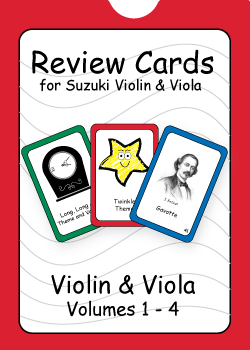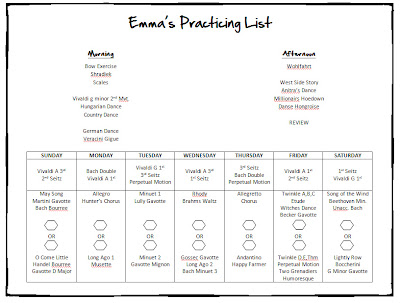Some of you may know, but most of you don't, but I'm having a BABY! What does that mean? It means that I've been sick for a month now and not feeling up to doing much of anything....including practicing. I'm sure my daughter doesn't mind, but in the back of my mind, I feel like a hypocrite for having a blog all about practicing when I'm not practicing what I preach...at least not lately. I WILL get back into the routine again sometime soon.
I've spent some time adding practicing charts to the website I've had stored on my computer for months. So, if you go to The Practice Shoppe website and browse around you may find some new, helpful charts. Here is a game I found that I used a while back with my little one. It's a basic chart, so you could make up your own rules.
 One way: fill in the boxes with songs that need to be practiced and just start from the beginning and use some sort of marker (these fun erasers work wonders) and proceed one box at a time until you get to the end. I let my daughter choose what to play on the butterflies.
One way: fill in the boxes with songs that need to be practiced and just start from the beginning and use some sort of marker (these fun erasers work wonders) and proceed one box at a time until you get to the end. I let my daughter choose what to play on the butterflies.Another way: fill in the boxes with songs that need to be practiced and make some cards with ways to move across the board (move forward two spaces, move back 3 spaces.) Include other fun cards (give a kiss to mom, play the next song outside, etc.)
Like I said - simple....we moms don't have time for anything too elaborate. But perhaps this will put some spice into your practice this week. I think I may use it again.
Find this chart HERE!






